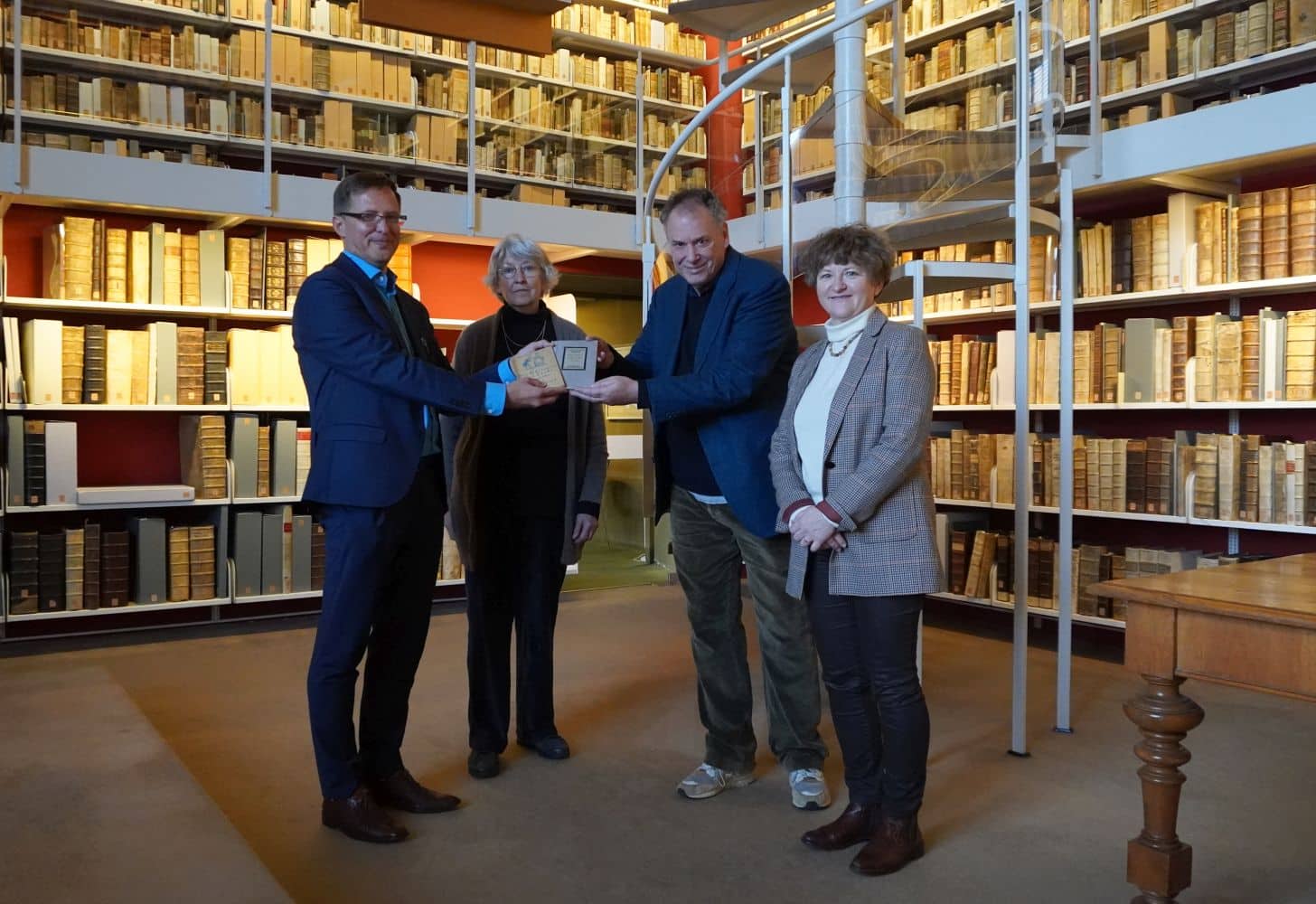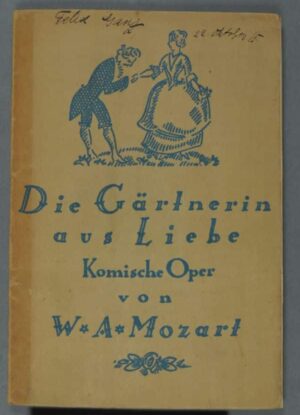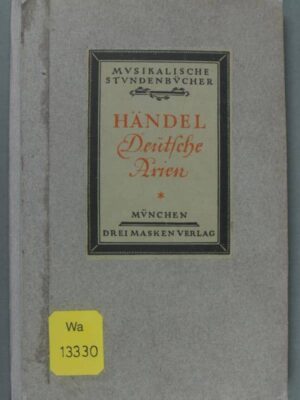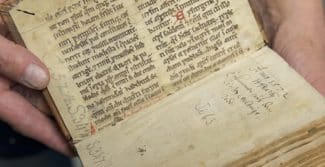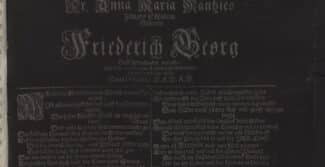16 November 2023
The books at issue are the 1912 edition, published in Mainz, of Die Gärtnerin aus Liebe: Komische Oper von W. A. Mozart; Neueinrichtung von R. u. L. Berger (La finta gardiniera: Comic Opera by W. A. Mozart; new setting by R. and L. Berger) belonging to Felix Ganz (1869‒1944) and Georg Friedrich Händel, Neun deutsche Arien (Nine German Arias), edited, set and with an introduction by Herman Roth (Munich, 1921) with an inscription indicating that it belonged to Olga Kreiß-Ganz (1900‒1974), a daughter of Feliz Ganz.
As a Jewish family, Felix Ganz, his wife and his children found themselves subject to the Nazi regime’s antisemitic programme of persecution. Until his business was ‘aryanised’ in 1934, Ganz had specialised in the import of textiles and decorative items from the Middle East. He was socially active as a supporter of numerous cultural associations, including the Gutenberg-Gesellschaft (Gutenberg Society), the Mainzer Liedertafel (Mainz Choral Society) and the Mainzer Altertumsverein (Mainz Antiquities Association), and made donations to the Römisch-Germanische Zentralmuseum (Roman-Germanic Central Museum). In his private villa on Mainz’s Michelsberg, Ganz put together a collection of art objects that gained a national reputation, as well as a private library focusing on a wide range of topics. The uncertain fate of the Ganz collection is the current focus of a research project being conducted in the Department of Art History at Johannes Gutenberg-Universität Mainz (Johannes Gutenberg University Mainz) – with a particular emphasis on the period after the family’s forced eviction from their Mainz villa in 1941 and Felix and Erna Ganz’s 1942 deportation to the Theresienstadt ghetto via Darmstadt. In 1944 the couple were transported to Auschwitz, where they were murdered. The project included a great deal of productive cooperation between Mainz and Wolfenbüttel.
Olga Renate Kreiß (later Rickards, née Ganz) worked both in Germany and abroad as an opera and concert singer. After the Nazis seized power, Kreiß lost her livelihood when local Nazi Party representatives imposed a de facto stage ban in 1934. She escaped the Holocaust by emigrating to the UK in March 1939. She lived in a flat in her parents’ villa on Mainz’s Michelsberg before her escape, in the lead-up to which she was forced to sell the furnishings and other property below value. In the course of her efforts to obtain restitution in West Germany, she pleaded the forced sale of a music cabinet as well as ‘sheet music, paintings, and crystal’. It is likely that these scores also included the Händel edition identified in the HAB collections. The arias it holds have been proven to have been part of Olga Kreiß’s repertoire.
Both volumes – the one belonging to Felix Ganz as well as the one belonging to Olga Kreiß-Ganz – entered the HAB’s collections as part of a multi-volume donation made by a library user in 1998.
Researching Nazi plunder
In the now finished project, the starting point for the search for possible Nazi plunder was the object. In some instances, provenance features such as handwritten entries, stamps or pasted bookplates allow us to reconstruct a book’s past. Such a feature becomes relevant for provenance research relating to the Nazi era if it can be dated to the twentieth century. This research involves the identification of individuals and institutions, followed by a focus on their fates under National Socialism. If researchers suspect an affiliation, for example, with a religious, ideological or political group that was persecuted by the Nazis, this can lead to quite comprehensive and in-depth detective work. Should a book be identified as Nazi plunder, the HAB strives to reach a ‘just and fair solution’ in the spirit of the Washington Principles. Not only can this mean the return of confiscated objects, but it also includes other, more tailor-made solutions, such as the one developed in this instance.
The social relevance of research into Nazi plunder
One of the main tasks facing museums, archives and libraries involves investigating their own holdings. If they uncover clues pointing to the confiscation of individual objects or entire collections under Nazi rule in circumstances that have not yet been investigated, this work becomes all the more relevant in social terms. Books with their own histories of dispossession and theft during the Nazi dictatorship continue to offer tangible evidence of the injustices committed nearly 80 years after the country’s liberation from National Socialism.
The HAB’s Nazi plunder projects
The now concluded two-year research project ‘Assets looted by the Nazis among the antiquarian holdings acquired by the Herzog August Bibliothek since 1969’ was supported by the Deutsches Zentrum Kulturgutverluste (German Lost Art Foundation. The HAB’s research into Nazi plunder at the HAB continues with the follow-up project ‘Assets looted by the Nazis among the Herzog August Bibliothek’s acquisitions made between 1933 and 1969’, which is also supported by the Deutsches Zentrum Kulturgutverluste.
Cover image: Johannes Mangei, deputy director of the HAB (left), hands the two books over to Adam Ganz (third from left), representative of the heirs of Felix Ganz and Olga Kreiß. Also present are Nicolette Mout, widow of Peter Felix Ganz (second from left) and Nathalie Neumann of the Johannes Gutenberg-Universität Mainz (right)
